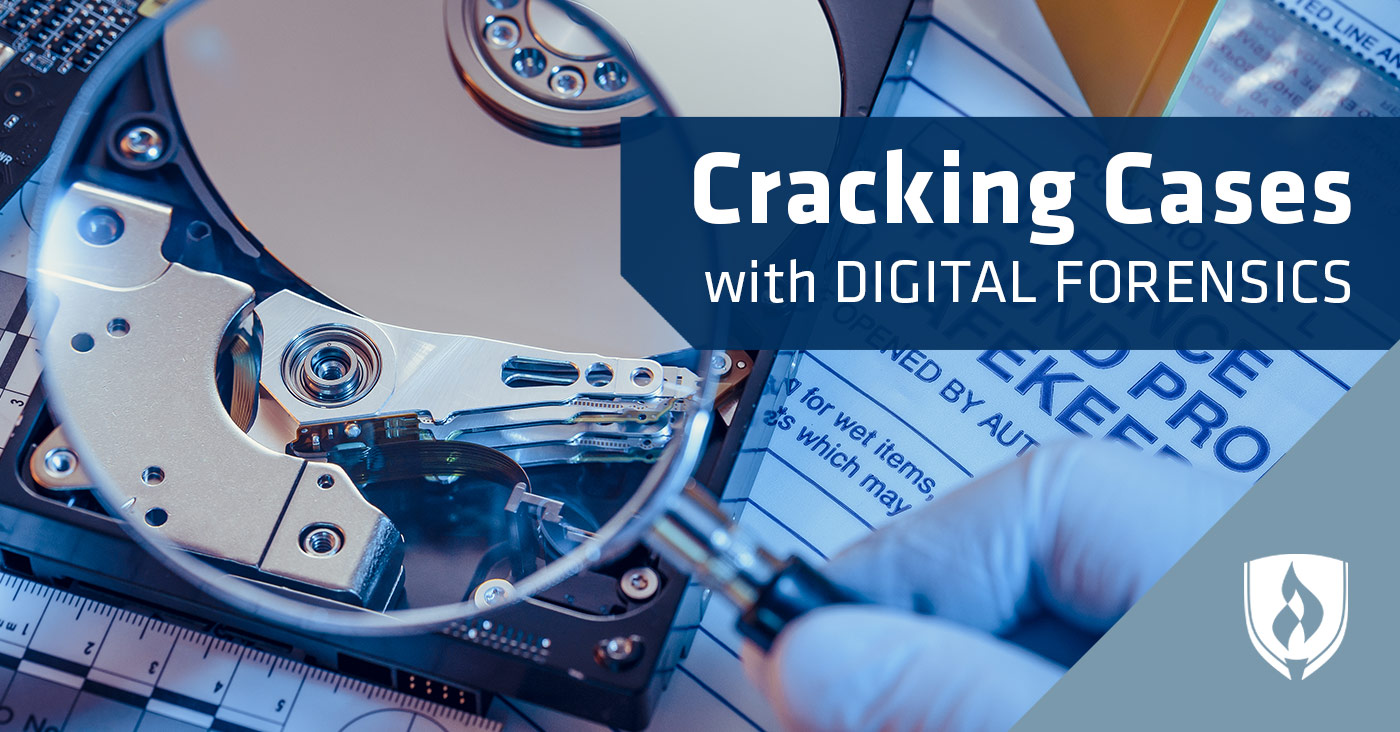
In the not-too-distant past, if you wanted to keep tabs on what someone was doing, you’d have to stealthily follow them around town with a camera. Today, however, a quick look at their digital devices would provide you with more information than you ever imagined.
With the infiltration of digital devices into all aspects of daily living—from mobile phones to wearable devices and vehicle connectivity—you amass data simply by going through your 21st-century life. Individuals leave a data-rich, digital footprint wherever they go; whatever they do.
The field of digital forensics emerged as an answer to all this data. Tapping into the wealth of information, investigators use it to unveil the truth even in the murkiest of cases. To help you better understand digital forensics, we spoke with three seasoned experts in the field to get the inside scoop. Keep reading to learn about the field and the critical role digital forensics plays in investigations—as well as some examples of high-profile cases cracked by it.
What is digital forensics?
Digital forensics is the act of recovering data from a digital device or system and then providing context for it, such as explaining the source and purpose of it for civil or criminal proceedings and internal investigations.
Private investigator David Nalley of Nalley Private Investigations sums it up as this: Digital forensics is a threefold process that includes:
- Preserving and recording the state of a digital device, such as a hard drive, mobile phone, network device or laptop,
- Analyzing the state of a digital device, and
- Reporting on it to glean useful information.
For example, a digital forensics investigator may dig into a device, such as a cell phone, to determine whether data proves or disproves an alleged action, explains Hazelwood Police Department Forensic Examiner Andy Hrenak.
"Digital forensics is really the marriage of art and a science."
“Digital forensics is really the marriage of art and a science,” says Hrenak. “It’s an application of scientific process to the art of data recovery.”
And in such a data-rich world, digital forensics examiners can analyze computer storage devices, network servers and other types of digital media to track down hackers, investigate an intrusion, gather evidence of a crime or uncover fraud, explains Edward J. Ajaeb, president of Nighthawk Strategies.
“Information obtained from digital devices, social media platforms and mobile apps can be crucial in an investigation. This information can include dates, times, locations and other important information that may be a key piece in an investigation,” he says.
And because data is so abundant, digital forensics is becoming an increasingly critical component to investigations everywhere.
Why digital forensics is important now more than ever
“Digital devices provide an unbiased, objective viewpoint on selective slices of our lives,” says Nalley.
Information derived from digital forensics plays a role in almost all cases today. With 95 percent of American adults owning cellphones, the prevalence of data is staggering, explains Hrenak. But it’s not just cell phones—it’s laptops and wearables, vehicle black boxes and smart appliances. It’s your search history and everything you click. It’s the Wi-Fi networks you connect to and the metadata in the photos you upload online.
“Technology is so integrated into society, and very few people live off the grid,” says Hrenak. “Because people communicate digitally, they leave a digital footprint.”
And as technology changes, digital forensics must also adapt to meet the needs of systems and their users. For example, devices have evolved from desktop computers to laptops and tablets, and now mobile phones.
“As more and more Americans shift their digital usage from home desktop computers to mobile apps and devices, the field of digital forensics has expanded to include these platforms and applications. Mobile devices and apps store valuable information about a user that may be useful in an investigation,” explains Ajaeb.
Famous cases cracked with digital forensics
Be it a text message, Google searches or GPS information, a person’s digital footprint can provide plenty of ammunition in the courtroom. Here are a few cases where digital forensics played a critical role in bringing about justice.
1. The BTK Killer, Dennis Rader
Perhaps the most famous case to be solved through digital forensics is that of the BTK Killer Dennis Rader, with “BTK” referring to his MO of “bind, torture and kill.” Rader enjoyed taunting police during his killing sprees in Wichita, KS. But this also proved to be his fatal flaw. A floppy disk Rader sent to police revealed his true identity. He was soon arrested, pled guilty and was put behind bars for life, much to the relief of his long-terrorized community.
2. Dr. Conrad Murray’s lethal prescriptions
Another recent case solved with digital forensics was that of Dr. Conrad Murray, personal physician of Michael Jackson. Digital forensics played a crucial role in the trial. After Jackson passed away unexpectedly in 2009, the autopsy found Jackson’s death to be the result of prescription drugs. Investigators discovered documentation on Dr. Murray's computer showing his authorization of lethal amounts of the drugs, and he was convicted of involuntary manslaughter for Jackson’s death. He served two years in prison and lost his medical license.
3. The Craigslist Killer, Philip Markoff
When one woman was killed and another attacked after meeting individuals through Craigslist, Boston was on high alert. Fortunately, law enforcement had their suspect within a week of the murder, thanks to digital forensics. Investigators tracked the IP address from the emails used in the Craigslist correspondence to an unlikely suspect: 23-year-old medical student Philip Markoff. Without the digital trail of evidence, who knows how prolific Markoff could have become.
Getting into digital forensics
How would you like to solve cases like these? If you’re intrigued by digital forensics, you’re in luck. Law enforcement needs tech-savvy investigators to dig into data and provide insights for investigations.
“There’s a huge demand for folks who can recover data and provide meaningful analysis,” Nalley says.
"There's a huge demand for folks who can recover data and provide meaningful analysis."
In fact, employment of forensic science technicians is projected to grow 17 percent through 2026, which is about two and a half times the average rate of growth for all occupations. And the work’s not just in-demand—it’s also rewarding and impactful. It’s something that can allow you to use your talent for technology while making a difference in your community.
“Locating the truth is the most rewarding part—sometimes truth isn’t what you expect it to be,” Hrenak says.
“Understanding how technology works is rewarding in itself. You’re able to use all the geeky, fun stuff and translate it into something actionable that helps a person or a company,” Nalley adds.
Whether you derive satisfaction from revealing the truth or helping others, digital forensics is sure to offer you new challenges to tackle, all through your curiosity and affinity for technology.
Follow the digital trail…
Now that we’ve piqued your interest in digital forensics, does it sound like something you could make a career out of? If you’re interested in the world of criminal justice, why not join it? Two of the most compelling careers in the field are those of investigators and detectives. They each get the benefit of solving cases and making a critical impact in keeping their communities safe.
Check out our article, “Private Investigator vs. Police Detective: Making the Case, ” to scope out more about these two intriguing investigative careers.




